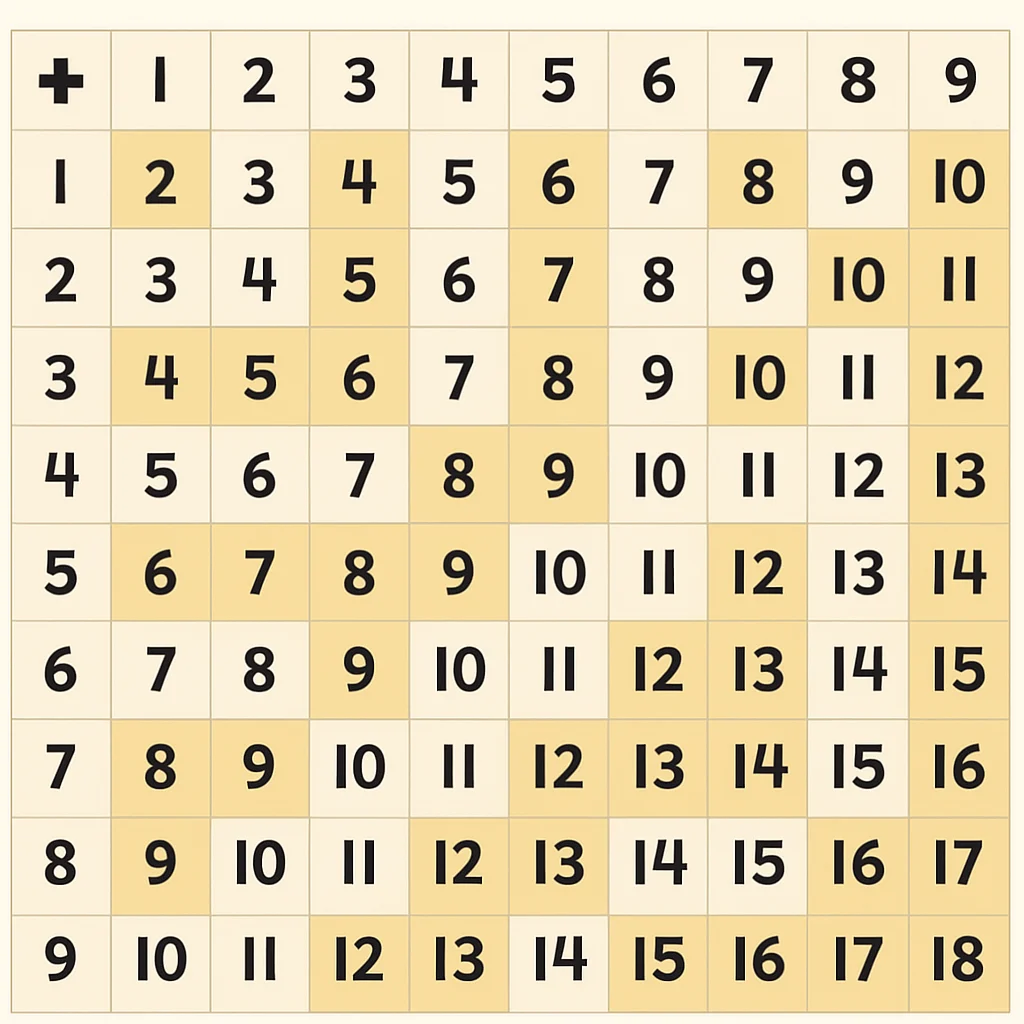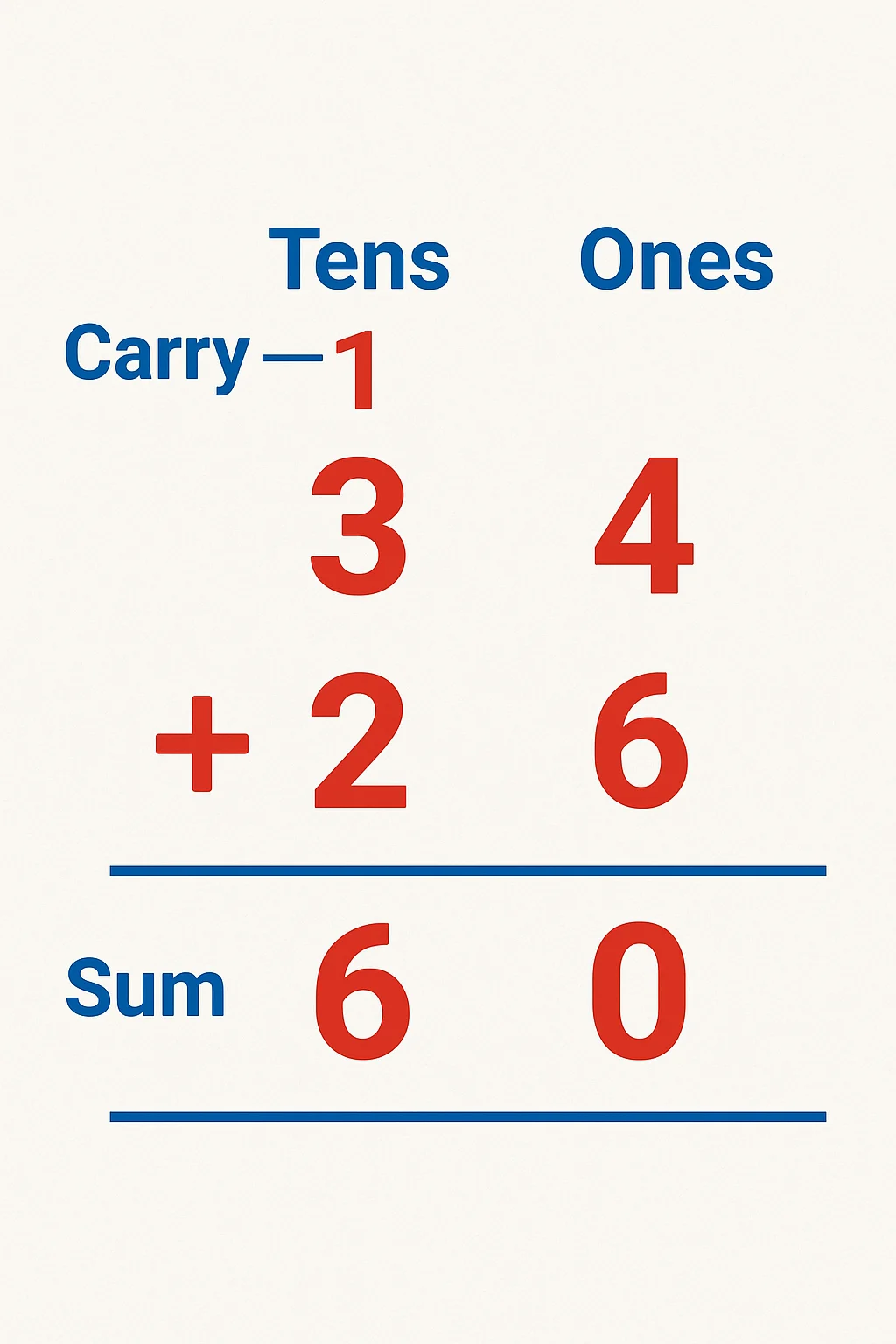Addition: Definition, Symbol, Formulas & Examples
Addition is one of the most important foundational math skills. It is among the 4 basic arithmetic operations in mathematics: addition, subtraction, multiplication, and division. This operator is used to add two or more numbers or things together. It also plays a vital role in our daily existence while dealing with various types of transactions. It is critical for kids to build conceptual fluency in the basic mathematical operations like addition and subtraction in primary grades. Practising more problems based on this topic will help in creating a solid foundation for fundamental skills.
In this article we'll cover the topic of addition in detail for kids to clearly understand the meaning of addition, its properties, different addition techniques and formulas. By solving the sample problems covered on this page, kids will grasp and implement basic mathematical concepts used in addition in both pre-primary and primary grades. Along with mathematical application, these problems also show the practical application of addition, which is very important for kids.
Table Of Contents
- Definition of Addition
- Addition Symbol
- Sum of 1-digit Numbers
- 2-digit and 3-digit Addition
- Sample Problems
- Frequently Asked Questions
- Summary
Definition of Addition
Addition is defined as the process used for adding numbers together. A plus sign ‘+’ between the numbers is used to denote the sum of two numbers; for example, the addition of 27 and 3 can be written as 27 + 3. We can use the plus sign (+) as many times as it requires. For example, if you want to show the addition of multiple numbers: 4 + 3 + 5 + 2.
Addition Symbol
A “+” plus sign is the symbol used for the addition of two or more than two numbers. Whereas the addition, while performing the addition of significantly large numbers or more items, we use the (∑) sigma symbol.
Sum of 1-digit Numbers
Learning addition is an important part of the curriculum. The basic addition skills developed during this stage are 1-digit addition and double-digit math addition, along with simple addition facts and visual methods taught in lower grades.

2-Digit & 3-Digit Addition
Learning the basic mathematical principle of adding sums of 2-digit or 3-digit numbers to obtain a new total is a necessary math skill. In primary school, children are taught how to solve fundamental addition problems using two, three and four-digit numbers.
To find the sum of two & three-digit numbers, first align the numbers vertically in the ones, tens and hundreds places (if more than two digits). Start from the right and add the numbers at the ones place, followed by the numbers at the tens place, and so on. Add digits place by place and carry over if the total is more than 9. For example, to find the sum of the 2-digit numbers 34 and 26, write the digits vertically at their place value and start adding them.

For lists of large numbers, it's usually more comfortable to write the list of numbers in a column and execute the calculation at the bottom. In this case, the addition of the list of numbers is termed as the sum and is represented using the symbol ∑.
Applications of Addition in Real Life
Understanding the methods and applying them to calculate sums is useful in many ways:
i) Shopping: During shopping, it is used to find the total cost of items purchased.
ii) Cooking: For cooking we add ingredients as per the recipes.
iii) Budgeting: In creating our monthly budgets, we add income and expenses.
iv) Travelling & Navigation: Addition is used to check distance and time required in travelling and navigation.
Sample Problems
Problem 1
Ravi had 64 marbles. He bought 29 more. How many marbles does he have now?
Answer:
Number of marbles Ravi has = 64
Number of new marbles he bought = 29
Total no. of marbles Ravi has = 64 + 29 = 93
Problem 2
Emma has 12 apples. Her mom gives her 9 more apples.
How many apples does Emma have now?
Answer:
Number of apples Emma has = 12
No. of apples mom gave her = 9
Total number of apples Emma has = 12 + 9 = 21 apples
Problem 3
There are 25 books on the top shelf and 18 books on the bottom shelf.
How many books are there in total?
Solution: 25 + 18 = 43 books
Problem 4
Tina has 37 superhero stickers and 24 animal stickers.
How many stickers does he have altogether?
Answer:
No. of superhero stickers = 37
No. of animal stickers = 24
Total number of stickers = 37 + 24 = 61 stickers
Problem 5
Sophie bakes 28 chocolate cupcakes and 34 vanilla cupcakes for a party.
How many cupcakes did she bake in total?
Answer:
No. of chocolate cupcakes = 28
No. of vanilla cupcakes = 34
Total number of cupcakes = 28 + 34 = 62 cupcakes
Frequently Asked Questions on Addition
1. What is addition in math?
Answer: Addition is the process of combining two or more numbers to find their total or sum.
2. What do we call the numbers we add?
Answer: The numbers being added are called addends, and the result is called the sum.
3. Does the order of numbers matter in addition?
Answer: No. Addition is commutative, meaning 5 + 3 = 3 + 5.
4. What happens when you add 0 to a number?
Answer: The number stays the same. For example, 9 + 0 = 9.
5. How to help children learn addition easily?
Answer: Using visual aids (like number lines, fingers, or blocks), practicing with flashcards, and learning addition facts help children build speed and confidence.
Summary
Addition is the basic operation that is introduced to the students at the primary level. If a child faces challenges in solving basic addition problems, math becomes difficult for them later. Therefore, it is highly important to help them build a solid foundation of addition concepts through practice.
Related Links
Admissions Open for
Admissions Open for
CBSE Schools In Popular Cities
- CBSE Schools in Bangalore
- CBSE Schools in Mumbai
- CBSE Schools in Pune
- CBSE Schools in Hyderabad
- CBSE Schools in Chennai
- CBSE Schools in Gurgaon
- CBSE Schools in Kolkata
- CBSE Schools in Indore
- CBSE Schools in Sonipat
- CBSE Schools in Delhi
- CBSE Schools in Rohtak
- CBSE Schools in Bhopal
- CBSE Schools in Aurangabad
- CBSE Schools in Jabalpur
- CBSE Schools in Jaipur
- CBSE Schools in Jodhpur
- CBSE Schools in Nagpur
- CBSE Schools in Ahmednagar
- CBSE School In Tumkur











